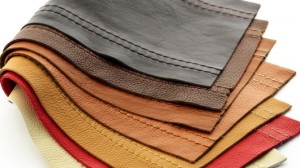 Most people like wearing leather jackets and shoes on the grounds that leather is a byproduct of the meat industry. This is true to some extent, but not every type of the leather is ethical. According to some statistics, more than a billion cows are being killed for meat annually and the skin sale provides around 20% of total revenues from an individual animal. However, ostrich leather provides 80% of the carcass value, while when it comes to the reptiles, they are almost always killed only because of their skin (almost 100% of the carcass’ value).
Most people like wearing leather jackets and shoes on the grounds that leather is a byproduct of the meat industry. This is true to some extent, but not every type of the leather is ethical. According to some statistics, more than a billion cows are being killed for meat annually and the skin sale provides around 20% of total revenues from an individual animal. However, ostrich leather provides 80% of the carcass value, while when it comes to the reptiles, they are almost always killed only because of their skin (almost 100% of the carcass’ value).
There is another ethical issue related to leather, its provenance. If you choose to buy cow leather jacket, you are very likely to buy products coming from China, the biggest cow leather exporter. The problem is that the welfare standards in their farms and slaughterhouses are questionable because they are not those you would expect to find in some European country.
Is there an environmental impact of leather products? Many people think that leather has no environmental impact, being natural and created by the living animals during their lifetimes. This is partly true, because the real damage might occur during the tanning process, because it commonly involves a toxic cocktail of chemicals including derivatives of coal-tar, formaldehyde and mineral salts. The common chrome tanning can result in the pumping of chromium (VI) into local water supplies and that can cause cancer. Therefore, this tanning form has been banned in European countries, but in Pakistan, for example, it is the most common tanning form without proper waste discharging.
Does all this mean that yu should stop buying leather jackets and shoes? Not necessarily, especially if you are a meat eater. However, you should look for vegetable tanned leather, European, U.S. and Canadian leather whenever possible, even though these products might be more expensive than others.
